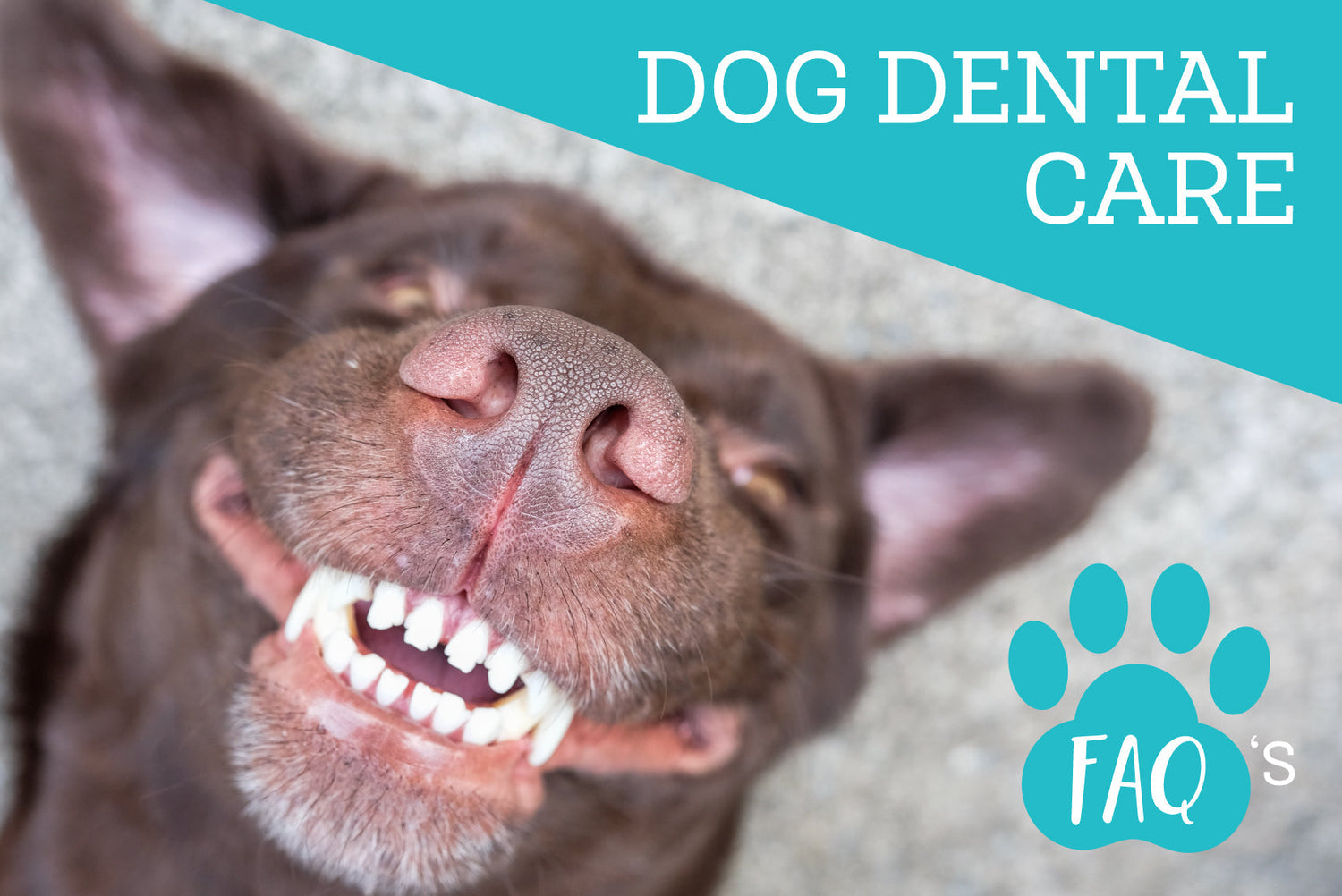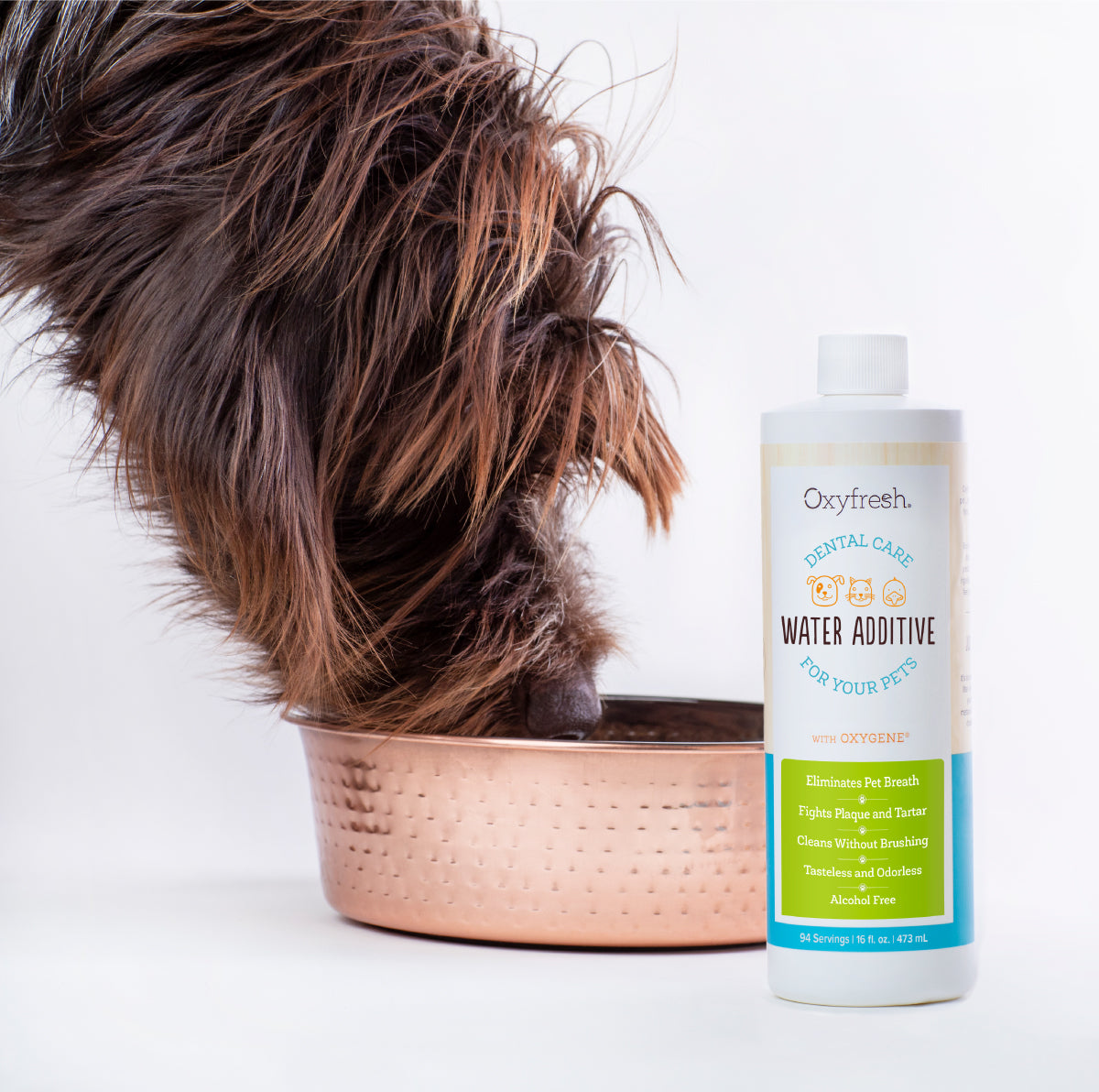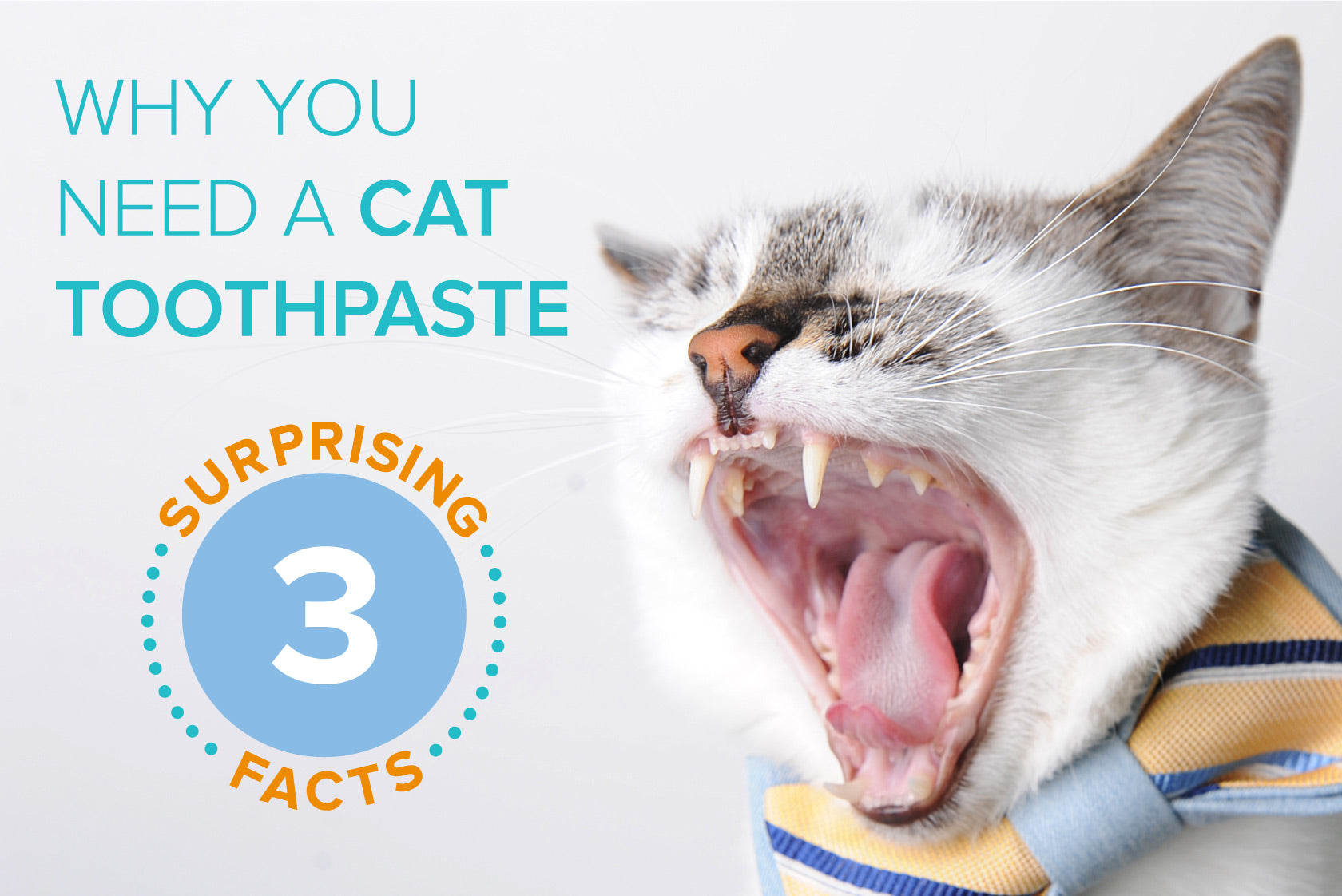Did you know that dogs are five times more likely to get gum disease than us mere humans?
This begs the question: how can we take better care of our dogs’ teeth?
As you embark down the uncharted path of dog dental care, it can quickly get overwhelming with all the technical info out there.
Fortunately, we’ve put everything you need to know in one place with easy answers to your Dog Dental Care FAQs.
So go grab a snack (Spot says grab one for him too) and dive in!
Q: Do I Really Need to Worry About Dog Teeth Cleaning?
A: The biggest reason for adopting a dog teeth-cleaning routine is it helps keep your dog’s entire body healthy. In the advanced stages of gum disease (periodontal disease), bacteria can systematically spread from a dog’s mouth to the rest of the body, affecting the heart, liver and kidneys. Ultimately, this affects their lifespan.
Dr. Jan Bellows, a board-certified veterinary dentist, “said it all” in this petMD article on oral hygiene: “When a client asks me how long their puppy will live, I usually respond 15-17 years if you brush their teeth daily … 11-13 years if you don’t.”
Q: How Do Dogs Get Gum Disease?
A: After a dog eats, plaque naturally forms on the teeth. Plaque is a clear, sticky substance that’s packed with bacteria. As the immune system works to fight the bacteria, enzymes break down the gum tissue, causing inflammation known as gingivitis. If the cycle continues uninterrupted, the dog’s oral health will get worse and worse as plaque hardens into tartar.
Tartar is what you absolutely don’t want on your dog’s teeth. Tartar is easy to spot … it’s yellowish-brown and most often builds up on the surface of the teeth, near the gum line. As tartar makes its way under the gums, it can lead to root exposure, infections, abscesses and eventual tooth loss.
Plaque is easily removed. Tartar is not. If your dog gets to the tartar stage, only a vet can remove this rock-hard substance.
Q: How Can I Tell if My Dog Already Has Gum Disease?
A: Gum disease is known as “the silent killer.” That’s because the first sign is usually no sign at all. As dental disease progresses in your dog’s mouth, here are the symptoms to watch out for …

7 Signs of Gum Disease in Dogs
- Bad Breath
- Loose Teeth
- Red, Swollen Gums
- Difficulty Eating
- Excessive Drooling
- Pawing at the Mouth
- Blood in Water Bowl or on Chew Toys
Q: How Do I Brush My Dog’s Teeth?
A: (Gulp.) For many dog owners, teeth brushing is even more intimidating than leash training. But take heart—with practice, you can be a bona-fide teeth-brushing machine in no time! The biggest secret here is to be consistent. Brushing once in a blue moon will make zero difference. Daily is best, but if that’s not realistic, shoot for at least 3 days a week. Here’s how to do it …
Step 1: Get Your Dog Used to Having His Mouth Handled
Before you introduce the toothbrush, every day for a week, you’ll want to spend some time rubbing the outside of your dog’s lips, teeth and gums with your finger, praising your pup and giving a treat afterwards. This will set you up for success.
Step 2: Get in Position
Have all your supplies ready to go and kneel or sit in front of your dog. (Never hold your dog down, as this will make him feel threatened.) Remember to pour on the praise the whole time!
Step 3: Brush!
Place one hand over the top of your dog’s muzzle and gently lift the lips. With your other hand, brush a few teeth in a circular motion at a 45-degree angle. Just focus on the outside surfaces of the teeth. The inside part does not collect as much plaque.The more you start tooth brushing, the longer your sessions will be – just be patient. And be sure to end each session with a treat, even if it did not go well!
Q: What Else Can I Do to Remove Plaque From My Dog’s Teeth … Besides Brushing?
A: No judgments. Dog tooth brushing is not for everyone. A great alternative is to use a daily water additive. Oxyfresh Pet Dental Water Additive is vet-recommended, non-toxic and proven to reduce plaque and bacteria. Plus, it’s tasteless and odorless. Just add a capful to your dog’s water bowl, and you’re good to go.
For more plaque-fighting ideas, check out 4 foolproof ways to remove plaque from your dog’s teeth.
Q: Is Gum Disease in Dogs Painful?
A: Gum disease in dogs can be painful, especially in the later stages as the teeth start to separate from the gums. Yet our faithful friends have the instinct to hide their pain. Unless your dog cries out when he eats or gets a head scratch from you, you likely won’t know if your dog is suffering.
Q: Isn’t Gum Disease Just a Problem for “Senior Pups”?
A: Actually, periodontal studies show that a surprising 80 percent of dogs already have
signs of gum disease by age 3. Early intervention is key to make sure plaque doesn’t harden into tartar and cause more serious problems in your pet’s mouth. Talk to your vet about an at-home dental action plan to ensure your dog gets the care he needs. (Dental routine now means less expenses later.)
Did we miss anything on our Dog Dental Care FAQ list? If so, comment below and we’ll send you a quick answer.










